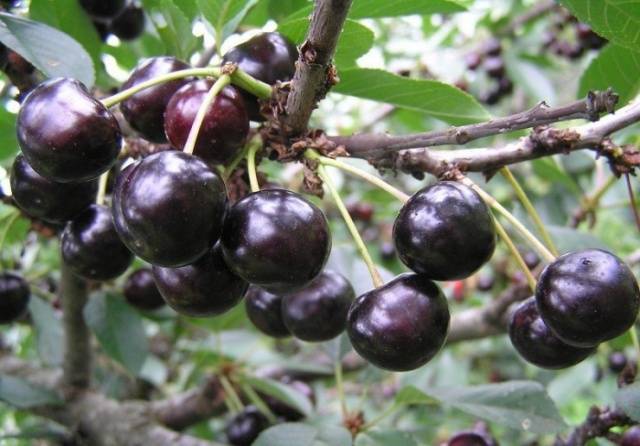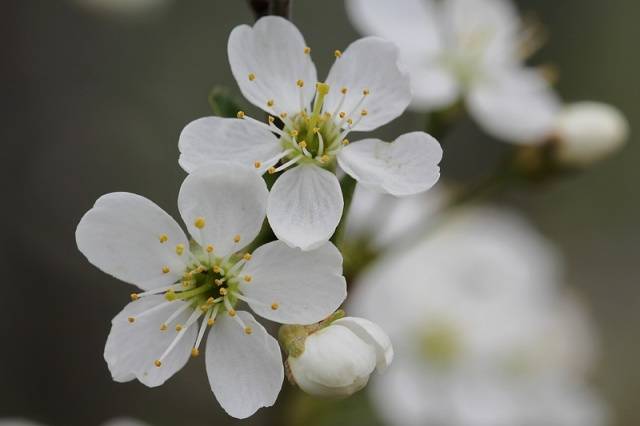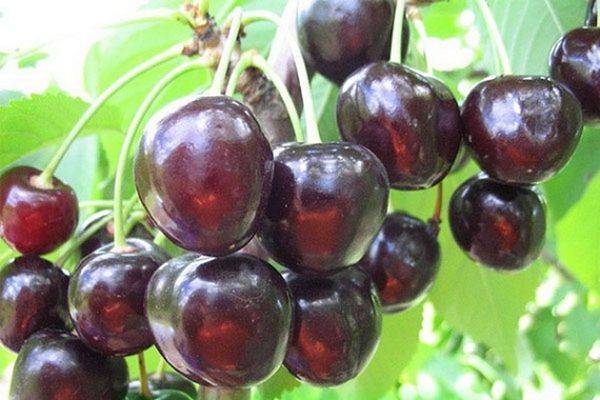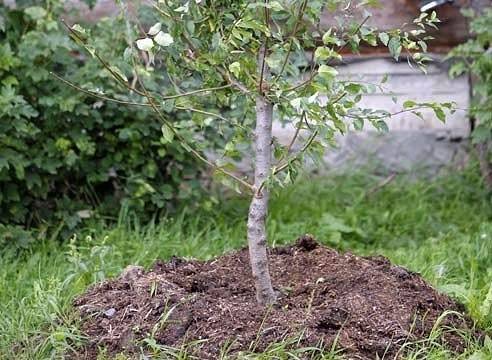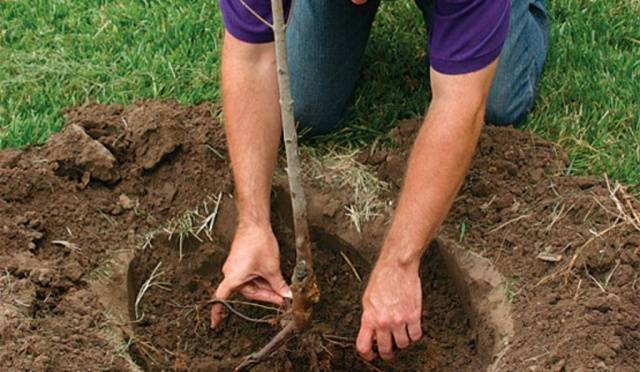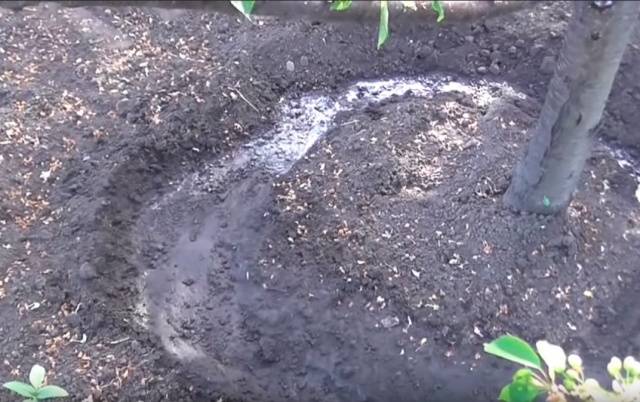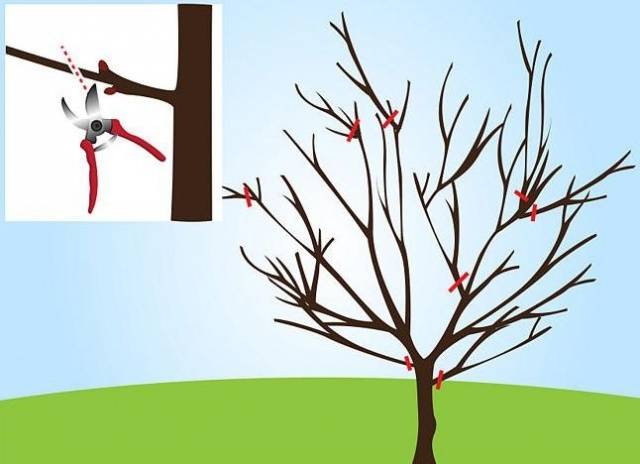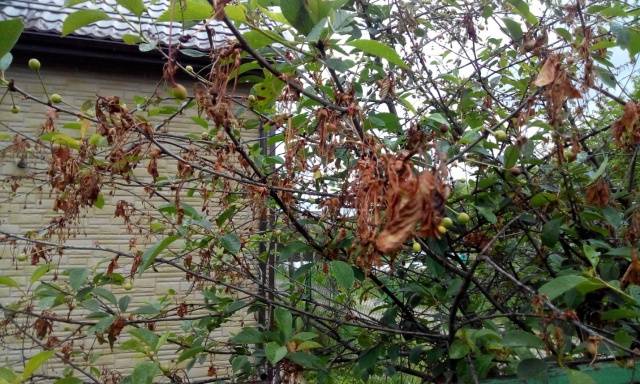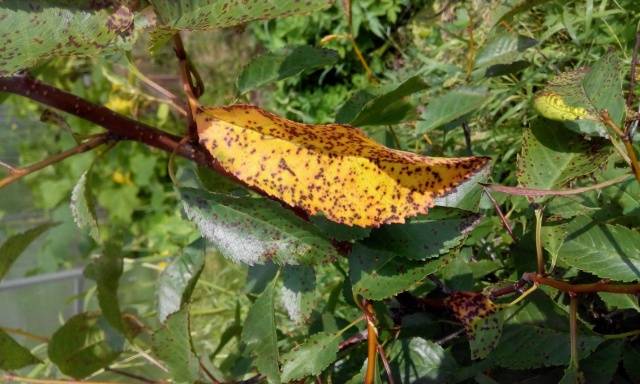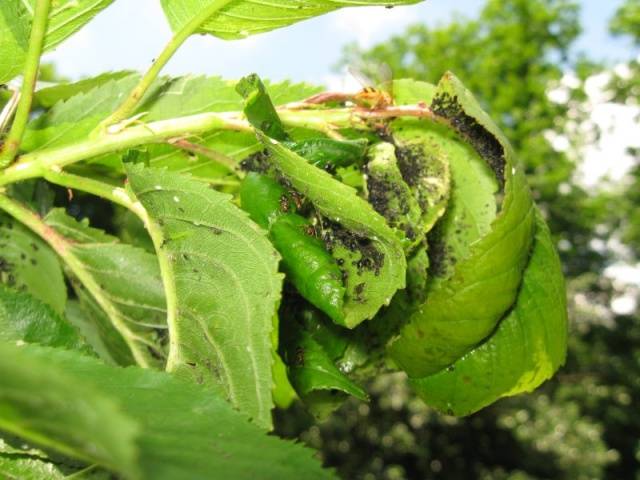Content
Compact cherry varieties Anthracite with dessert type fruits - medium late ripening. In the spring, the fruit tree will become a decoration of the garden, and in the summer it will be convenient to harvest from it. Winter hardiness, portability and average susceptibility to stone fruit diseases make this variety suitable for growing in private gardens.
Breeding history
For a wide range of gardeners, the Anthracitovaya cherry variety has become available since 2006, when it was included in the State Register and recommended for the central regions of Russia. The employees of the All-Russian Research Institute, at the experimental station in Orel, worked on the breeding of a fruitful variety, choosing high-quality material from randomly pollinated cherry seedlings Black Consumer Goods.
Description of culture
The new variety was bred for cultivation in the regions of the center of the country, by its characteristics it is suitable for almost all regions.
An ordinary cherry tree Anthracite with a spreading, raised crown grows up to 2 m. The branches are not thick. The cone-shaped buds are small, up to 3 millimeters long, located close to the branch. Dark green, finely serrated leaves up to 6-7 cm long, in the form of a wide ellipse, the top is sharp, the base is rounded. The top of the leaf blade is glossy, curved; veins protrude sharply from below. The petiole is long, up to 12 cm, with a bright anthocyanin shade. Umbrella inflorescence forms 3-5 flowers with white petals, up to 2.3 cm in diameter.
Cherry fruits are heart-shaped Anthracite, the fruit funnel is wide, the top is rounded. The peduncle is short, 11 mm on average. The size of medium berries is 21x16 mm, the thickness of the pulp is 14 mm. The weight of the berries is from 4.1 to 5 g. The peel of the Anthracite cherry variety is dense, but thin, by the time of ripening it acquires an intense dark red, almost black hue. The rich color of the berries gave the name to the variety.
Juicy, sweet and sour cherry pulp Anthracite dark red, medium density. The berries contain 11.2% sugars, 1.63% acid and 16.4% dry matter. The yellow-cream seed, which takes only 5.5% - 0.23 g of the berry mass, is easily separated from the pulp. On this basis, cherries of the Anthracite variety are compared with sweet cherries. The attractiveness of the fruits was very high - 4.9 points. The dessert taste of Anthracite cherries is rated at 4.3 points.
Characteristics
A distinctive feature of the new variety of sweet cherry with dark fruits is many positive traits inherited from the mother plant.
Drought resistance, winter hardiness
The cherry tree Anthracite can withstand the winters characteristic of central Russia. The Anthracite cherry variety will take root well and will bear fruit in the Moscow region. But the plant will not withstand very low protracted temperatures.
Anthracite is resistant to short-term droughts. To obtain a good harvest, the tree must be watered in a timely manner in the grooves made around the crown circumference.
Pollination, flowering period and ripening times
A specific feature of the mid-late Anthracite variety is partial self-fertility. Even from a lonely tree, a small crop can be removed. Berry picking will be much richer if you plant cherries of such varieties as Vladimirskaya, Nochka, Lyubskaya, Shubinka or Shokoladnitsa nearby. Experienced gardeners also advise placing cherries nearby.
Anthracite cherry blossoms from the middle or the end of the second decade of May. The fruits ripen after July 15-23, depending on climatic conditions.
Productivity, fruiting
Ovaries are formed on bouquet branches and shoots of last year's growth. The tree begins to bear fruit as early as 4 years after planting. The fragility of the plant should be taken into account: Anthracite cherry on average bears fruit for 15-18 years. Under the conditions of good care, timely watering and competent feeding, up to 18 kg of berries ripen on a tree of this variety. During the tests, the variety showed an average yield of 96.3 c / ha. The maximum yield rose to 106.6 c / ha, which indicates a positive production characteristic of Anthracitovaya cherry varieties.
Scope of berries
Berries of Anthracite cherries are consumed fresh and processed into various compotes and jams. The fruits are also frozen and dried.
Disease and pest resistance
Cherry varieties Anthracite are moderately affected by moniliosis and coccomycosis. The tree must be examined during the growing season for early detection of pests: aphids, moths, cherry flies.
Advantages and disadvantages
The Anthracite cherry variety has already gained strong popularity in the Central region and is spreading in other areas due to a number of advantages.
- Excellent consumer qualities: beautiful appearance of berries, thick pulp and pleasant taste;
- Transportability;
- High productivity;
- Relative self-fertility;
- Winter hardiness and ability to withstand short-term droughts.
The disadvantages of the variety are:
- Average immunity to fungal diseases: coccomycosis and monilial burn;
- Infestation by pests.
Landing features
To make the collection of sweet berries happy, you need to choose the right place and time for planting Anthracite cherries.
Recommended timing
A seedling with an open root system will take root well only in spring. The trees are planted in containers until September.
Choosing the right place
Placing an Anthracite seedling on the south side of the buildings is the best option. Avoid wind-blown locations.
- Cherries are not planted in areas with stagnant water and in lowlands. Or placed on a mound;
- Trees thrive on loamy and sandy loamy soils with a neutral reaction;
- Heavy soils are improved with sand, peat, humus;
- Acidic soils are diluted with lime.
What crops can and cannot be planted next to cherries
Cherries or cherries are planted near the Anthracite variety. Good neighbors are hawthorn, mountain ash, honeysuckle, elderberry, such a currant that grows in partial shade. You can not plant tall apple trees, apricots, linden, birch, maples nearby. The neighborhood of raspberries, gooseberries and nightshade crops is undesirable.
Selection and preparation of planting material
A high-quality cherry sapling of the Anthracite variety is bought in specialized farms.
- The best seedlings are biennial;
- The stem is not less than 60 cm;
- Barrel thickness 2-2.5 cm;
- The length of the branches is up to 60 cm;
- The roots are firm, without damage.
From the place of purchase to the site, the Anthracite seedling is transported by wrapping the roots in a damp cloth. Then it is immersed in a clay mash for 2-3 hours. You can add a growth stimulant, according to the instructions.
Landing algorithm
A peg is driven into the finished well with the substrate for the garter of the Anthracite cherry seedling.
- The seedling is placed on a mound, spreading the roots;
- The root collar of a cherry is placed 5-7 cm above the soil surface;
- After watering, lay a layer of mulch up to 5-7 cm;
- The branches are cut by 15-20 cm.
Follow-up care of the culture
Growing cherry varieties Anthracite, the soil is loosened to a depth of 7 cm, removed weeds... The cherry tree is watered once a week, 10 liters each morning and evening. Watering Anthracite cherries after flowering and during fruit setting is important.
The tree is fed for 4-5 years of growth:
- In early spring with carbamide or nitrate;
- Organic matter is introduced into the flowering phase;
- After collecting the berries, fertilize with urea by foliar method.
Weak and thickening branches are pruned in early spring.
Before winter, the trunk circle is mulched. The trunk of a young tree is protected with several layers of agrotextile and a rodent net.
Diseases and pests, methods of control and prevention
Diseases / pests | Signs | Control methods | Prophylaxis |
Moniliosis or monilial burn | Shoots, ovaries and leaves that look like burnt | Spraying with copper-containing agents in early spring, after flowering, in autumn | Infected branches are removed, fallen leaves and diseased branches are burned |
Coccomycosis | There are red dots on the leaves. Bottom grayish accumulations of mycelium. The leaves are withering. Infection of branches and fruits | Spraying with fungicides at the end of flowering and after picking berries | Treatment in early spring with Bordeaux liquid or copper sulfate |
Aphid | Colonies underneath twisted leaves | Processing in early spring, after flowering, in summer: Inta-Vir, Aktellik, Fitoverm | Sprinkling in spring: Fufanon |
Cherry fly | The larvae spoil the fruit |
| Post-flowering treatment: Fufanon |
Conclusion
Planting this variety is a good choice when taking care of the pollinator tree. A sunny place, watering and feeding are important for the quality of the berries. Early processing will save the tree from diseases and pests.
